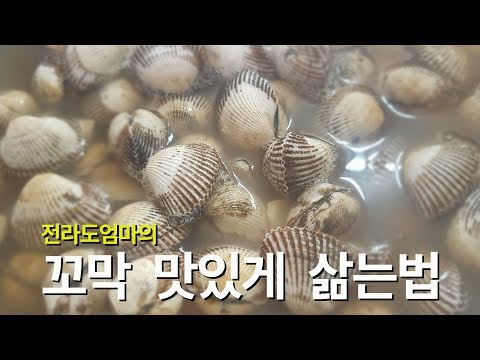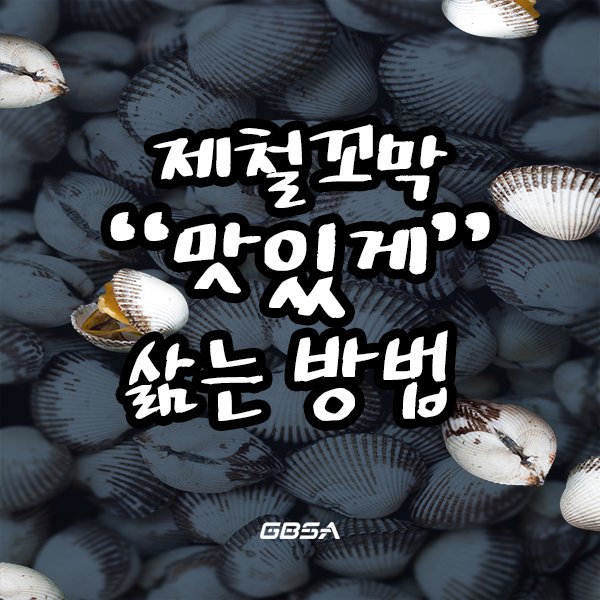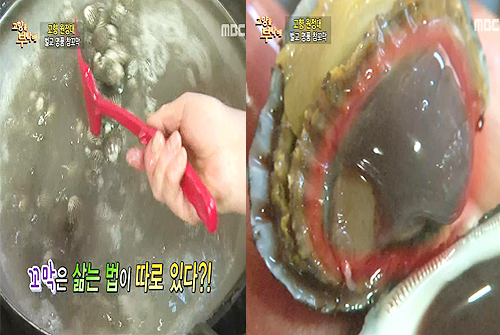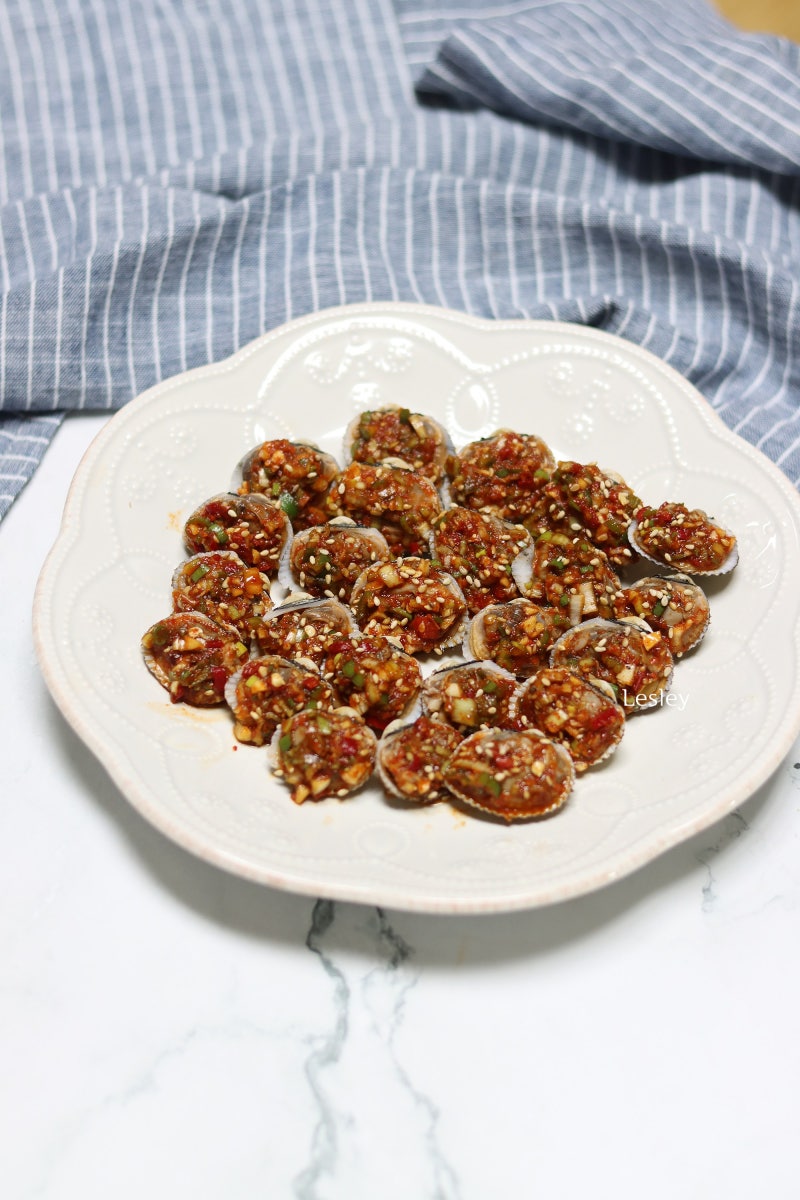꼬막 삶는 시간
1. 꼬막 삶는 방법
1.1. 꼬막 삶기 전 필요한 준비물
1.2. 꼬막을 삶는데 필요한 재료
1.3. 꼬막을 삶기 전에 바르는 소금물의 비율
2. 꼬막 삶는 시간에 영향을 미치는 요소
2.1. 꼬막의 크기와 두께에 따른 시간 차이
2.2. 꼬막 신선도와 삶는 시간의 관계
3. 꼬막 삶기의 최적 시간
3.1. 꼬막이 완전히 익는 시간
3.2. 과도한 삶은 경우의 꼬막의 맛과 질감 변화
4. 꼬막 삶는 시간에 따른 꼬막의 맛 변화
4.1. 삶은 시간에 따른 꼬막의 부드러움 변화
4.2. 삶은 시간에 따른 꼬막의 신맛과 짠맛 변화
5. 꼬막 삶는 시간과 함께하는 부재료
5.1. 고춧가루, 마늘, 파 등을 사용한 조림 요리
5.2. 국물 요리에서의 꼬막 삶는 시간의 중요성
6. 꼬막 삶기의 다양한 활용 방법
6.1. 꼬막무침, 꼬막찜, 꼬막국 등의 대표적인 음식
6.2. 꼬막 삶은 후 다양한 요리로 변화시키는 방법
7. 꼬막 삶는 시간을 고려한 요리 팁
7.1. 꼬막을 삶는 시간을 조절하여 다양한 음식에 활용하기
7.2. 꼬막이 적당히 삶긴 후 활용하는 법
8. 꼬막 삶는 시간의 변화와 전통적인 음식문화
8.1. 한국 음식문화에서의 꼬막의 역할과 변화
8.2. 꼬막 삶는 시간의 변화가 전통을 담은 음식에 미치는 영향
꼬막 삶는 시간에 대한 FAQs:
Q1: 꼬막을 삶기 전에 준비해야 할 물품이 무엇인가요?
A1: 꼬막을 삶기 위해 준비해야 할 물품에는 꼬막, 소금, 물, 냄비, 차가운 물로 채운 그릇이 포함됩니다.
Q2: 꼬막을 삶는 동안 필요한 재료는 어떤 것들인가요?
A2: 꼬막을 삶는 동안 필요한 재료에는 물과 소금이 있습니다. 소금은 꼬막의 맛을 도와주는 역할을 합니다.
Q3: 꼬막을 삶기 전에 바르는 소금물의 비율은 어떻게 되나요?
A3: 꼬막을 삶기 전에 바르는 소금물의 비율은 4% 정도가 적당합니다. 예를 들어, 1리터의 물에 소금을 40g 정도 살짝 더한 후 꼬막을 담아 삶으면 됩니다.
Q4: 꼬막의 크기와 두께가 꼬막 삶는 시간에 영향을 미치나요?
A4: 네, 꼬막의 크기와 두께는 꼬막 삶는 시간에 영향을 미칩니다. 보통 크기가 작은 꼬막은 삶는 시간이 짧고, 크기가 큰 꼬막은 삶는 시간이 길어집니다.
Q5: 꼬막 신선도와 삶는 시간은 관계가 있나요?
A5: 네, 꼬막 신선도는 꼬막 삶는 시간에 영향을 줍니다. 신선한 꼬막은 더 짧은 시간에 삶고, 상태가 좋지 않은 꼬막은 더 긴 시간에 삶아야 합니다.
Q6: 꼬막이 완전히 익는 시간은 어느 정도인가요?
A6: 꼬막이 완전히 익는 시간은 보통 3~5분 정도가 됩니다. 꼬막이 삶는 시간이 지나치게 길어지면 과감해지거나 맛이 변할 수 있으므로 조심해야 합니다.
Q7: 과도한 삶은 경우 꼬막의 맛과 질감은 어떻게 변화하나요?
A7: 과도한 삶은 경우 꼬막의 맛과 질감이 불붙은 맛이 더해지고 질검하게 됩니다. 꼬막이 삶은 후 신선도와 맛을 유지하기 위해서는 꼬막을 미리 식힌 물에 담가야 합니다.
Q8: 삶은 시간에 따라 꼬막의 부드러움은 어떻게 변화하나요?
A8: 삶은 시간이 길어질수록 꼬막은 더 부드러워집니다. 육즙이 많은 꼬막은 적어도 5분 이상 삶아야 완전히 부드러워집니다.
Q9: 삶은 시간에 따라 꼬막의 신맛과 짠맛은 어떻게 변화하나요?
A9: 삶은 시간이 길어질수록 꼬막의 신맛은 감소하고 짠맛이 강해집니다. 적당한 시간에 삶아야 꼬막의 신맛과 짠맛을 적절하게 즐길 수 있습니다.
Q10: 꼬막 삶는 시간과 함께하는 부재료로 어떤 것들이 있나요?
A10: 꼬막 삶는 시간과 함께하는 부재료로는 고춧가루, 마늘, 파 등을 사용한 조림 요리가 있습니다. 꼬막을 삶은 물은 국물 요리에도 사용됩니다.
Q11: 꼬막을 삶은 후 다양한 음식으로 활용할 수 있는 방법이 있나요?
A11: 네, 꼬막을 삶은 후 다양한 음식으로 활용할 수 있습니다. 꼬막무침, 꼬막찜, 꼬막국 등 꼬막을 주 재료로 한 음식들이 대표적인 예입니다.
Q12: 꼬막을 삶는 시간을 조절하여 다양한 음식에 활용할 수 있는 팁은 무엇인가요?
A12: 꼬막을 삶는 시간을 조절하여 다양한 음식에 활용할 수 있는 팁은 꼬막의 삶는 시간을 줄이면 무릎 꼬막무침, 꼬막비빔밥 등에 적합하고, 긴 시간 삶으면 꼬막국, 꼬막찜 등에 활용할 수 있습니다.
Q13: 꼬막이 적당히 삶긴 후 활용하는 방법을 알려주세요.
A13: 꼬막이 적당히 삶긴 후 활용하는 방법으로는 꼬막무침, 꼬막국 등을 만들 수 있습니다. 또한, 꼬막을 다른 요리의 재료로 활용하기도 좋습니다.
Q14: 한국 음식문화에서 꼬막의 역할과 변화는 무엇인가요?
A14: 한국 음식문화에서 꼬막은 주로 안주로 즐겨지는 음식으로 사용됩니다. 최근에는 냉동 꼬막 삶기, 꼬막양념장, 꼬막무침, 꼬막무침 양념, 꼬막비빔밥, 꼬막 에어프라이어, 꼬막 삶은 물, 꼬막 데치기 등 다양한 변형된 요리가 등장하고 있습니다.
Q15: 전통적인 음식에 꼬막 삶는 시간의 변화가 어떤 영향을 미치나요?
A15: 전통적인 음식에 꼬막 삶는 시간의 변화가 다양한 영향을 미칩니다. 냉동 꼬막 삶기, 꼬막양념장, 꼬막무침, 꼬막무침 양념, 꼬막비빔밥, 꼬막 에어프라이어, 꼬막 삶은 물, 꼬막 데치기 등 새로운 요리들이 등장하며 음식문화의 다양성을 보여줍니다.
사용자가 검색한 키워드: 꼬막 삶는 시간 냉동 꼬막 삶기, 꼬막양념장, 꼬막무침, 꼬막무침 양념, 꼬막비빔밥, 꼬막 에어프라이어, 꼬막 삶은 물, 꼬막 데치기
Categories: Top 94 꼬막 삶는 시간
꼬막 삶는법 | 전라도엄마의 꼬막삶는방법 황금레시피 | 꼬막삶는시간
꼬막해감 몇시간?
꼬막해감의 시간은 많은 요소에 따라 달라질 수 있습니다. 꼬막의 크기와 종류, 그리고 꼬막을 가져오는 곳에 따라 해감 시간은 달라집니다. 일반적으로 꼬막 해감은 4~6시간 정도 걸릴 수 있으며, 때로는 8시간 이상 소요되기도 합니다. 꼬막을 제대로 해감하고자 한다면, 몇 가지 중요한 단계를 따라야 합니다.
1. 꼬막을 씻습니다: 꼬막은 해감하기 전 반드시 깨끗하게 씻어야 합니다. 미지근한 소금물에 꼬막을 담가서 1~2시간 정도 살짝 불려줍니다. 그 후 깨끗한 물로 꼬막을 잘 씻어냅니다.
2. 꼬막을 해동시킵니다: 꼬막은 해동과정을 거쳐 얼어 있는 상태를 해동시켜야 합니다. 냉동 꼬막을 그냥 삶는다면 맛과 식감이 손상될 수 있으므로, 냉장고에서 천천히 자연적으로 해동시키는 것이 좋습니다.
3. 꼬막을 잘게 갈라줍니다: 꼬막을 구이거나 조리하기 전에, 기호에 따라 꼬막을 잘게 썬 뒤 이용할 수 있습니다. 이 작업은 해감 전후로 할 수 있으나, 대부분이 해감 후에 이루어집니다.
4. 꼬막을 조리합니다: 꼬막은 구이, 찜, 조림 등 다양한 요리 방법으로 즐기실 수 있습니다. 각각의 조리방법에 따라 시간은 다를 수 있습니다. 일반적으로 10~15분 정도 조리하면 꼬막이 부드러워지고, 맛있게 먹을 수 있습니다.
꼬막해감에 자주 묻는 질문과 그에 대한 답변은 다음과 같습니다.
Q1: 꼬막을 해감하지 않고 바로 조리해도 되나요?
A1: 꼬막을 해감하지 않고 바로 조리할 수는 있지만, 해감하지 않을 경우 꼬막의 맛과 식감이 손상될 수 있습니다. 해감은 꼬막의 품질을 보장하기 위해 필요한 과정입니다.
Q2: 꼬막을 얼마나 오랫동안 해동시켜야 하나요?
A2: 꼬막의 크기와 냉동 정도에 따라 해동 시간이 다를 수 있습니다. 일반적으로 4~6시간 정도의 해동 시간이 필요합니다. 꼬막을 냉장고에서 천천히 자연 해동시키는 것이 가장 좋습니다.
Q3: 해감된 꼬막을 얼마 동안 보관할 수 있나요?
A3: 해감된 꼬막은 신선한 상태에서 2~3일 동안 보관 가능합니다. 그러나 꼬막은 빠르게 상하기 때문에 가능한 빨리 조리하여 드시는 것이 좋습니다.
Q4: 꼬막해감을 건너뛰어도 되는 이유가 있을까요?
A4: 꼬막해감은 꼬막의 맛과 식감을 향상시키기 위해 중요한 과정입니다. 해감을 건너뛴다면 꼬막이 부드러워지지 않거나 맛이 좋지 않을 수 있습니다.
Q5: 꼬막을 삶는 시간은 얼마나 걸리나요?
A5: 꼬막을 삶는 시간은 꼬막의 크기와 조리 방법에 따라 다릅니다. 일반적으로 10~15분 정도 삶으면 꼬막이 부드러워지고, 맛있게 먹을 수 있습니다.
꼬막은 한국의 해산물 중에서도 특별한 맛을 가진 식재료입니다. 꼬막을 해감하는 과정은 중요하지만, 제대로 해감하면 요리하는 과정에서 더욱 풍부한 맛과 식감을 느낄 수 있습니다. 자신만의 특별한 꼬막 요리를 즐기기 위해 꼬막해감에 시간을 들여보세요!
생면 몇붕?
Introduction:
Korean cuisine is renowned for its diverse and delicious range of dishes. Among these, 생면 몇붕? (pronounced “saengmyeon myeotbun?”) holds a special place. This traditional noodle dish has been a staple in Korean households for generations. In this article, we will delve into the history, preparation, variations, and nutritional value of 생면 몇붕? We will also address some frequently asked questions to provide a comprehensive understanding of this delectable Korean delight.
I. History and Origin of 생면 몇붕?
Dating back to the late Joseon Dynasty (1392-1910), 생면 몇붕? has a rich history that intertwines with the culinary traditions of Korea. The dish originated in the northern regions of the Korean Peninsula, where wheat was cultivated more extensively compared to rice. The availability of wheat led to the creation of various wheat-based dishes, including 생면 몇붕?
생면 몇붕? gained popularity and spread across Korea during the 1940s. It became highly prevalent during the post-Korean War era when food scarcity led to the exploration of alternative food sources. The dish was not only an easily accessible and affordable option but also fulfilled the dietary requirements of households.
II. Preparation of 생면 몇붕?
1. Noodle Making:
The term 생면 (saengmyeon) refers to the wheat-based noodles used in this dish. The noodles are made by mixing wheat flour, salt, and water. The dough is then rolled out and cut into thin, long noodles.
2. Broth:
The broth for 생면 몇붕? is prepared using various ingredients such as beef bones, dried anchovies, dried kelp, and dried shiitake mushrooms. The bones and ingredients are simmered to extract their flavors, resulting in a rich and savory broth.
3. Toppings:
Typically, 생면 몇붕? is adorned with assorted toppings like thinly-sliced beef, boiled eggs, cucumbers, pickled radish, and kimchi. These toppings add texture, flavor, and color to the dish.
III. Variations of 생면 몇붕?
While the basic concept of 생면 몇붕? remains the same, there are several regional and seasonal variations across South Korea. Some popular variations include:
1. 평양냉면 (Pyongyang Naengmyeon):
This variation, hailing from North Korea, is served cold with the noodles placed atop a tangy and refreshing broth made from beef stock, fruits, and vinegar. It is often garnished with sliced radish, cucumber, mustard sauce, and a boiled egg.
2. 짬뽕냉면 (Jjambbong Naengmyeon):
Originating from the Chinese-inspired Korean dish 짬뽕 (jjambbong), this variation combines the spiciness of jjambbong with the coolness of 생면 몇붕? Spicy seafood broth is poured over the noodles, which are then garnished with seafood, vegetables, and a spicy sauce.
3. 가마솥냉면 (Gamasot Naengmyeon):
A specialty of Andong, this variation is served in a hot stone pot. The noodles are placed in a gamasot (traditional Korean iron pot) filled with hot broth, meat slices, mushrooms, and vegetables. The pot keeps the dish warm and flavorful throughout the meal.
IV. Nutritional Value of 생면 몇붕?
생면 몇붕? is not only a delightful culinary experience but also a nutritious option. The noodles provide a source of carbohydrates and essential minerals while being low in fat. The broth contributes to the dish’s nutritional value with its collagen-boosting properties, aiding joint health, and promoting digestion. The inclusion of various vegetables and toppings further enhances the dish’s nutritional profile.
FAQs:
1. Is 생면 몇붕? suitable for vegetarians or vegans?
The traditional recipe of 생면 몇붕? includes animal-based ingredients like beef broth and meat toppings. However, vegetarian or vegan versions can be created by substituting the broth with a vegetable-based alternative and using plant-based toppings.
2. Can I enjoy 생면 몇붕? as a gluten-free option?
Given that 생면 몇붕? is made from wheat-based noodles, it is not suitable for those with gluten sensitivity or celiac disease. However, some restaurants offer gluten-free alternatives made from ingredients like sweet potato starch or buckwheat.
3. How can I cook 생면 몇붕? at home?
To cook 생면 몇붕? at home, you can purchase pre-packaged 생면 noodles and broth from Korean grocery stores. Alternatively, you can try your hand at making the noodles and broth from scratch using readily available ingredients and recipes found online.
4. Can I enjoy 생면 몇붕? year-round or is it a seasonal dish?
Although 생면 몇붕? is traditionally enjoyed during the summer months due to its refreshing nature, it can be savored throughout the year. Additionally, the regional variations allow for diverse preparations that cater to different seasons and preferences.
Conclusion:
생면 몇붕? is an enticing example of Korean culinary excellence that has stood the test of time. Its history, preparation methods, variations, and nutritional value make it a must-try dish for both locals and visitors. With the FAQs section addressing common queries, you are now equipped with the knowledge to savor this delightful Korean noodle dish and explore its diverse adaptations. Dive into the world of 생면 몇붕? and experience the flavors and textures that have delighted palates for centuries.
여기에서 자세히 보기: experience-porthcawl.com
냉동 꼬막 삶기
좋은 음식을 찾는 이들 사이에서 꼬막은 맛있고 건강한 선택지로 널리 알려져 있습니다. 냉동 꼬막은 가장 편리한 형태로 구매할 수 있어 빠르고 쉬운 요리에 알맞습니다. 이 기사에서는 냉동 꼬막을 삶는 최상의 방법과 팁을 제공하려고 합니다.
냉동 꼬막 삶기는 상당히 간단한 과정입니다. 먼저, 꼬막을 해동시킵니다. 해동 시간은 개별적으로 다를 수 있으며, 제품 패키지에 관련 정보가 포함되어 있습니다. 보통 4~6시간 정도의 시간이 필요하며, 주의할 점은 반드시 냉장고에서 해동시켜야 합니다. 꼬막을 해동시킬 때는 꼬막이 완전히 해동된 상태로 사용하는 것이 중요합니다.
꼬막을 해동시켰다면, 꼬막을 삶기 위해 냄비에 물을 끓입니다. 물에는 소금을 약간 추가해 소금물을 만들어 줍니다. 꼬막을 물에 살짝 담갔다 바로 건져내는 방법으로 간단하게 조리할 수도 있지만, 꼬막의 품질을 끌어올리기 위해서는 물을 한번 끓일 때까지 끓여야 합니다.
물이 한번 끓으면, 꼬막을 한 번에 넣는 대신 작은 양을 추가해 주는 것이 좋습니다. 이렇게 하면 물이 다시 빨리 끓어오르게 되며, 꼬막의 품질을 보존할 수 있습니다. 꼬막을 삶을 때 소금을 넣는 이유는 꼬막의 맛을 좀 더 부드럽게 만들기 위해서입니다. 하지만 개인의 취향에 따라 소금을 사용하지 않는 것도 가능합니다.
꼬막을 소금물에 넣고 나서, 중간에 한 번 뒤집어 주는 것이 중요합니다. 꼬막의 크기와 육질 때문에 꼬막을 균등하게 삶기 위해서는 중간에 한 번 뒤집어 주는 것이 좋습니다. 이렇게 함으로써 꼬막이 더욱 고루 익게 삶을 수 있습니다. 삶는 시간은 근거리에 따라 달라질 수 있으며, 보통 3~5분 정도 소요됩니다. 꼬막이 투명해지고 꼬막 곳곳에 흰색 변색이 없을 때가 적절한 삶은 시기입니다.
꼬막을 물에서 건져내고 식힌 후 바로 섭취해도 맛있게 먹을 수 있지만, 조금 더 특별하고 맛있는 방법을 시도해 볼 수도 있습니다. 다양한 소스를 활용하여 꼬막에 풍부한 맛을 더할 수 있습니다. 소금, 후추, 다진 마늘과 같은 간단한 조미료만으로도 꼬막의 맛을 높일 수 있습니다. 또한, 레몬 주스, 초고추장, 고추기름 같은 소스를 더해서 더욱 다채로운 맛을 즐길 수도 있습니다.
냉동 꼬막을 삶는 과정에서 몇 가지 팁을 알려드리겠습니다. 첫째로, 꼬막이 완전히 해동된 후에 사용해야 합니다. 해동되지 않은 꼬막은 조리 후 맛과 질감에 영향을 미칠 수 있습니다. 둘째로, 살아있는 꼬막을 요리하려면 물이 끓기 시작한 후에 바로 꼬막을 넣어야 합니다. 그렇지 않으면 꼬막이 물 속에 빠지면서 풍미를 잃어버릴 수 있습니다.
자주 묻는 질문:
Q: 냉동 꼬막을 삶기 전에 해동해야 하나요?
A: 네, 꼬막을 완전히 해동한 후에 삶으면 최상의 맛과 질감을 느낄 수 있습니다.
Q: 꼬막을 삶을 때 소금을 사용해야 하나요?
A: 꼬막의 맛을 부드럽게 만들기 위해 소금을 사용하는 것이 일반적이지만, 개인의 취향에 따라 소금을 사용하지 않아도 됩니다.
Q: 꼬막을 삶는 시간은 얼마나 되나요?
A: 보통 꼬막을 삶는 데에는 3~5분 정도 소요됩니다. 꼬막이 투명해지고 흰색 변색이 없을 때가 적절한 삶은 시기입니다.
Q: 냉동 꼬막을 삶을 때 특별한 소스를 사용할 수 있나요?
A: 네, 꼬막에는 다양한 소스를 사용하여 다채로운 맛을 즐길 수 있습니다. 소금, 후추, 다진 마늘 외에도 레몬 주스, 초고추장, 고추기름 등을 활용할 수 있습니다.
이제 여러분은 냉동 꼬막을 최상의 방법으로 삶을 수 있습니다. 쉽고 간단한 요리로 저렴하고 맛있는 꼬막 요리를 즐겨보세요!
꼬막양념장
한국은 해물 요리로 유명한 나라로 꼬막은 매우 인기 있는 해산물 중 하나입니다. 꼬막은 작고 식용 가능한 껍질을 가지며, 바닷물에서 주로 산출됩니다. 꼬막의 자연스러운 맛과 식감은 그 자체로 매력적이지만, 한국에서는 꼬막을 더욱 풍미 있게 만들어주는 특별한 소스인 꼬막양념장이 인기를 끌고 있습니다.
꼬막양념장은 꼬막을 더맛있게 먹을 수 있도록 해주는 양념입니다. 이 소스는 간단하지만 풍부한 맛을 제공하며, 꼬막을 더욱 특별하게 만들어줍니다. 꼬막양념장의 주된 재료는 고춧가루, 다진 마늘, 생강, 소금, 다진 양파, 다진 청양고추, 식초, 설탕, 국간장, 참기름 등이며, 이러한 재료를 섞어 만드는 것으로 소스를 완성합니다. 꼬막양념장은 매우 맛있으며, 세계 각국에서도 인기가 있습니다.
꼬막양념장은 다양한 방법으로 즐길 수 있습니다. 가장 일반적으로는 꼬막을 굽거나, 끓여서 차게 한 후 꼬막양념장을 곁들여 먹습니다. 꼬막양념장은 꼬막과의 궁합이 굉장히 잘 맞으며, 양념장의 매콤하고 감칠맛나는 맛이 꼬막의 싱싱함을 더욱 돋보이게 만들어줍니다.
또한, 꼬막양념장은 다른 해물 요리와도 잘 어울립니다. 꼬막이나 다른 해산물을 튀겨서 소스로 찍어먹을 수도 있고, 신선한 해산물에 꼬막양념장을 뿌려 특별한 맛을 더할 수도 있습니다. 또는 꼬막양념장을 마리네이드로 사용하여 바베큐나 오븐에서 구워 먹을 수도 있습니다. 다양한 방법으로 꼬막양념장을 활용할 수 있어 매우 다재다능한 소스입니다.
자, 이제 널리 알려진 꼬막양념장에 대한 자주 묻는 질문들을 알아보도록 하겠습니다.
Q: 꼬막양념장은 어떻게 만들어야 하나요?
A: 꼬막양념장을 만들기 위해서는 다양한 재료를 섞어야 합니다. 고춧가루, 다진 마늘, 생강, 소금, 다진 양파, 다진 청양고추, 식초, 설탕, 국간장, 참기름 등을 섞어 양념장을 완성합니다. 고춧가루와 청양고추를 조절하여 매운맛을 다르게 조절할 수도 있습니다.
Q: 꼬막양념장을 유지할 수 있는 방법은 있나요?
A: 꼬막양념장은 냉장고에서 저장하면서 오랫동안 신선하게 유지할 수 있습니다. 반죽된 꼬막양념장을 깨끗한 용기에 담아 냉장 보관하면 약 한 달 정도 지속됩니다. 만약 오랜 기간동안 보관하고자 한다면 꼬막양념장을 얼려두는 방법도 있습니다.
Q: 꼬막양념장이 너무 매워요. 어떻게 해결할 수 있나요?
A: 꼬막양념장의 매운맛은 개인의 취향에 따라 다르게 조절할 수 있습니다. 중간에 물을 조금씩 섞어주면 매운맛을 줄일 수 있습니다. 또한, 고춧가루와 청양고추의 양을 조절하여 매운맛을 조절할 수도 있습니다.
꼬막양념장은 한국의 대표적인 해물 요리 소스 중 하나로 꼬막을 더욱 맛있게 만들어줍니다. 꼬막양념장은 단순한 재료를 이용하여 만들지만, 풍부한 맛과 다양한 활용 방법으로 인기를 끌고 있습니다. 매콤하고 감칠맛있는 꼬막양념장이 꼬막을 한층 더 특별한 요리로 만들어줍니다. 꼬막을 좋아하는 사람이라면 한 번쯤 꼭 경험해봐야 할 해물요리 소스인 꼬막양념장을 만들어보세요!
꼬막무침
Introduction:
Korea is renowned for its rich culinary heritage, and one of the most beloved traditional dishes is 꼬막무침 (kkomaek muchim), also known as seasoned cockles. This delectable seafood delicacy combines fresh cockles with a vibrant array of vegetables and seasonings, resulting in a refreshing and invigorating dish that captures the essence of Korean cuisine. In this article, we will delve into the world of 꼬막무침, exploring its history, ingredients, preparation methods, and health benefits. So, let’s embark on a mouthwatering journey and discover the secrets behind this beloved Korean dish.
A Brief History:
Cockles, the key ingredient of 꼬막무침, have been consumed in Korea for centuries. The abundant coastline and thriving fishing industry of Korea fostered a deep-rooted connection between seafood and Korean cuisine. Cockles, small bivalve mollusks found in shallow marine environments, were traditionally harvested by coastal villagers who would then prepare them in various ways. Over time, regional variations and personal touches led to the creation of the 꼬막무침 we know today – a dish that celebrates the natural flavors of cockles while incorporating the unique Korean touch.
Ingredients and Preparation:
To prepare a delectable plate of 꼬막무침, the following ingredients are typically used:
1. Fresh Cockles: The star of the dish, fresh and succulent cockles provide a delightful briny and slightly sweet taste.
2. Vegetables: Various vegetables are included to enhance the dish’s flavors and bring vibrant colors to the table. Common choices include cucumber, radish, spring onions, and Korean chili peppers.
3. Seasonings: A blend of seasonings adds depth and complexity to the dish. Soy sauce, sesame oil, minced garlic, vinegar, and a touch of sugar are commonly used to achieve the perfect balance.
The preparation of 꼬막무침 is relatively straightforward but requires careful attention to detail. After cleaning the cockles thoroughly, they are steamed until they open, indicating that they are cooked and ready for consumption. The cooked cockles are then removed from their shells and combined with the sliced vegetables and seasonings in a mixing bowl. To ensure all the flavors meld together, it is recommended to allow the dish to marinate for a short period, usually around 10 to 15 minutes. Once the flavors have melded, 꼬막무침 is ready to be savored and enjoyed.
Health Benefits:
Apart from its exceptional taste, 꼬막무침 also offers a variety of health benefits. Cockles are an excellent source of protein, vitamins, and minerals such as vitamin B12, iron, and zinc, which are essential for maintaining overall health. Furthermore, cockles are low in calories and fat while being rich in omega-3 fatty acids, crucial for heart health and brain function. Additionally, the abundance of fresh vegetables used in this dish contributes to its nutritional value, providing essential vitamins and dietary fibers. So, indulge in this delightful Korean dish guilt-free, knowing that it nourishes your body as well as your taste buds.
FAQs:
1. Can I substitute cockles with other seafood?
While cockles are the preferred choice for 꼬막무침, you can experiment with other seafood options such as clams or mussels. However, bear in mind that the distinct flavor of cockles adds depth and complexity to the dish, making it a truly authentic experience.
2. Can I adjust the spiciness level?
Absolutely! The level of spiciness can easily be adjusted based on personal preferences. You can increase or decrease the amount of Korean chili peppers or omit them altogether if you prefer a milder version of 꼬막무침.
3. Is 꼬막무침 a suitable dish for vegetarians or vegans?
While the traditional recipe includes cockles, vegetarians and vegans can still enjoy a similar experience by substituting cockles with vegetarian alternatives like mock shellfish or tofu. Additionally, the vibrant vegetable medley and the blend of seasonings provide a delightful dish even without the seafood element.
4. How should I store 꼬막무침?
Due to the presence of fresh vegetables, 꼬막무침 is best enjoyed immediately after preparation. However, if you have leftovers, store them in an airtight container in the refrigerator. Consume within a day or two to ensure the freshness and quality of the dish.
Conclusion:
꼬막무침 is a flavorful and refreshing Korean dish that perfectly combines the taste of fresh cockles with an array of colorful vegetables and a tantalizing blend of seasonings. This traditional delicacy offers a culinary journey through Korea’s rich food culture and is enjoyed by Koreans and food enthusiasts worldwide. Whether you are a seafood lover, a spice aficionado, or someone seeking a unique taste experience, 꼬막무침 is undoubtedly a dish that will satisfy your cravings and leave you wanting more.
주제와 관련된 이미지 꼬막 삶는 시간

꼬막 삶는 시간 주제와 관련된 이미지 22개를 찾았습니다.

![꼬막장]꼬막무침보다 훨~씬 맛있는 꼬막장아찌!꼬막삶는법/꼬막삶는시간/제철음식 - YouTube 꼬막장]꼬막무침보다 훨~씬 맛있는 꼬막장아찌!꼬막삶는법/꼬막삶는시간/제철음식 - Youtube](https://i.ytimg.com/vi/-G9YgxRO-ps/sddefault.jpg)











![바다정보다잇다] 쫄깃 달큰한 맛을 자랑하는 겨울제철 꼬막의 모든 것 - 머니투데이 바다정보다잇다] 쫄깃 달큰한 맛을 자랑하는 겨울제철 꼬막의 모든 것 - 머니투데이](https://thumb.mt.co.kr/06/2021/02/2021020216053052674_1.jpg/dims/optimize/)







![바다정보다잇다] 찬바람 불면 맛있는 수산물 1.꼬막 - 해양/레저 바다정보다잇다] 찬바람 불면 맛있는 수산물 1.꼬막 - 해양/레저](https://thumb.mt.co.kr/06/2018/11/2018111914370693016_2.jpg)


![바다정보다잇다] 쫄깃 달큰한 맛을 자랑하는 겨울제철 꼬막의 모든 것 - 머니투데이 바다정보다잇다] 쫄깃 달큰한 맛을 자랑하는 겨울제철 꼬막의 모든 것 - 머니투데이](https://thumb.mt.co.kr/06/2021/02/2021020216053052674_2.jpg/dims/optimize/)











Article link: 꼬막 삶는 시간.
주제에 대해 자세히 알아보기 꼬막 삶는 시간.
- 꼬막 삶는법 & 시간, 양념장까지 뚝딱! – 만개의레시피
- #꼬막삶기 [꼬막삶는방법] – 만개의레시피
- 꼬막 삶는법 :: 꼬막 해감과 삶는 시간 알아보아요~ : 네이버 블로그
- 꼬막 삶는 법 – 우리의식탁 | 키친가이드
- 꼬막 삶는시간 얼마나 걸릴까 – 시골아가씨 – 티스토리
- 꼬막 삶는법, 삶는 시간 꼬막 해감 쉽게하는법 – 백년밥상TV
- 초보자도 실패 없이! 제철 꼬막 삶는법 – 퓨어비프 – 티스토리
- 꼬막 해감법과 잘 삶는 꿀팁! – 인어교주해적단
- 생칼국수 맛있게 삶는법 – 매일매일 맛있게! 메뉴판닷컴
- 꼬막 삶는법 해감부터 손질 자세히 꼬막무침 맛있게
- 꼬막 삶는법 삶는시간 중요해요 – 필요한 정보만 쏙쏙
더보기: https://experience-porthcawl.com/blog/
